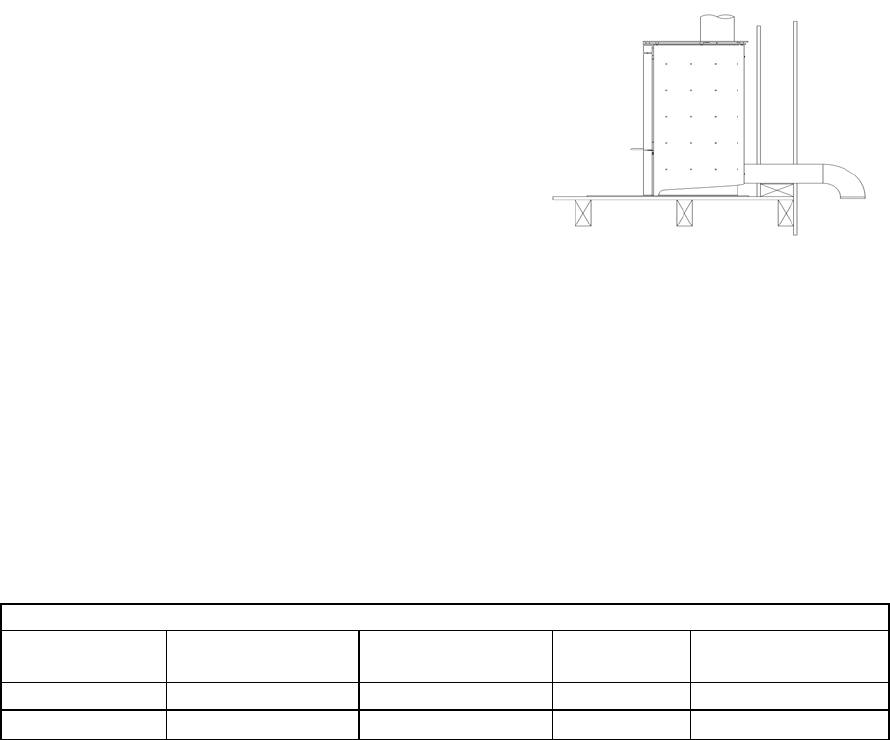
11
Outside air requirements
Required for mobile home and in certain localities (Check with building officials)
Outside air must not be drawn from an enclosed space (garage or other unventilated spaces)
When using outside air, find a location where the chimney and outside air hole do not interfere with structural members
of the home.
Connect a 4" (100 mm) diameter stainless steel or other non-combustible corrosion resistant material, to the O.S.A hook-
up box.
Run the pipe to the outside avoiding sharp bends and turn the end down and fit a corrosion resistant mesh to prevent the
entry of leaves and rodents, seal all the penetration of the outside wall.
Draft Requirements
SCAN stoves are only one component of the total system. The venting system is equally important
for achieving the required flow of combustion air to the firebox and for safely removing unwanted
combustion by-products from the appliance. If the venting system’s design does not promote these
ends, the system may not function properly. Poorly functioning venting systems may create
performance problems as well as become a safety hazard (i.e. an oversized chimney may result in
less than optimum performance. Installations into a large, masonry chimney may require a liner to
improve performance). A draft test should read greater than .04" W.C. (Inches Water Column) and
less than .08" W.C. The table below shows the dimension of the connection piece as well as data
for the draft requirements for the stove:
With Closed Doors
Connection
piece
Chimney
draught
Efficiency
in %
BTU
USA
ø 6”
0.05” WC
63%
7,600 – 29,000
Canada ø152 13 Pa 63 %
7,600 – 29,000
The chimney draught depends on the weather conditions. In stormy weather, you may reduce the
chimney draught by closing the damper in the smoke pipe (if a damper has been installed). If the
chimney draught is strong, the combustion air supply must be reduced additionally.


















